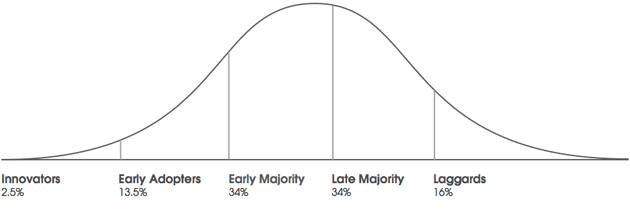Seth Godin, in many of his books repeatedly highlights the problem with interruption marketing - a traditional advertising technique were companies target the mass market and interrupt them with advertisements. This is no longer an effective strategy, people have become desensitised to this form of advertising and it only serves to frustrate people in many cases.
So what's the solution?
Word of Mouth Marketing
People are much more open to hearing a recommendation from someone else, this technique is especially powerful on the web due to the social nature of the medium. It’s incredibly easy to refer others to products online through blogging and social networks. Many products also make use of referrals to provide an incentive for users to talk about the product; Dropbox, for example reward users with an extra 500 megabytes of space if they recommend a friend.
It’s important to make it easy for people to talk about your product, by incorporating links that encourage social sharing, such as Tweet This or Like buttons, this removes the obstacles the user has to overcome in order to tell their friends. Most people are unlikely to open up an email and recommend something to a friend, but if they can achieve the same result at the click of the button, they are much more likely to do so.
Diffusion of Innovations
To get the most effective results from word of mouth marketing, a strategy is required. Rodgers Diffusion of Innovations is the theory of how ideas spread throughout a social system over time.

In the diagram above; the innovators and early adopters are the first groups of people to start using a new product. These are the people who queue outside the Apple store on launch day to become one of the first to own the new iPhone. The early and late majority represent the average consumer while the laggards are those still using a Nokia 3310.
Traditional mass advertising would target the middle section of the curve in an attempt to reach the most amount of people, but this is not the most effective strategy. The innovators and early adopters have a huge influence over the rest of the consumers in the curve, when these people talk about a product they will influence the buying decisions of the early and late majority.
By understanding this, you can determine a list of ‘sneezers’ within the first two groups – people who will spread the word about your product or idea for you. When these people talk about a product, others will listen. They should be people with a large sphere of influence within the target market. On the web it’s easy to determine this by looking at statistics such as Twitter followers, Facebook friends or RSS subscribers.
Why Would They Do This?
This group of people love to be the first to use the latest product, they are the trendsetters – so if you have a new product, they will be eager to try it out and share it with others. However, it’s important that you have a great product that people want to talk about. In The Purple Cow, Seth Godin speaks about how products should be remarkable. In other words, the product should be something that people want to remark about to others.
Case Study - Bear CSS

With Bear CSS, I identified two sneezers. The first was [CSS Mania](http://cssmania.com/; because the target market for Bear CSS is web designers this allowed me to easily gain exposure in this market by submitting the project to a web gallery. The site was featured on the 18th January 2011, the analytics diagram below shows how the traffic spiked from virtually no hits prior to this to a peak of 649 in the first day before tapering off to an average of 200-400 hits per day.

The second sneezer was Chris Spooner, I’m a huge fan of his work and he regularly produces and writes about illustration work similar to Bear CSS, so I sent him an email with a link to the project and asked if he could provide some feedback. He very kindly featured the site on his Line25 blog in a Sites of the Week article which drove an additional 400 hits to the site on the 27th January.
The Project Promotes Itself
This was pretty much all that was required in terms of active promotion on my behalf, the real magic began afterwards when word started to spread across the web. On the 31 of January 2011, the project made it to number 5 on the front page of yCombinators Hacker News blog which drove 10, 947 hits to the site in 24 hours.

After this, the project started appearing on various blogs all over the web, including The Next Web.
Twitter Epidemic
In addition, the project also generated a significant amount of buzz on Twitter, with thousands of people across the globe tweeting about it and driving more traffic to to the site.

I’ve collated some of the tweets using David Turner’s Tweet Tracker application: http://bearcss.com/tweets
The project continues to promote itself through word of mouth and maintains a steady stream of traffic to the site on a daily basis. I’d read a lot about the Diffusion of Innovations before this, but this was my first attempt at putting it into practice. It’s a very powerful technique for creating a sustainable promotional strategy for any product, but especially a web application.
Further Reading
If you would like to find out more then the following books are a must read:
The Tipping Point – Malcolm Gladwell